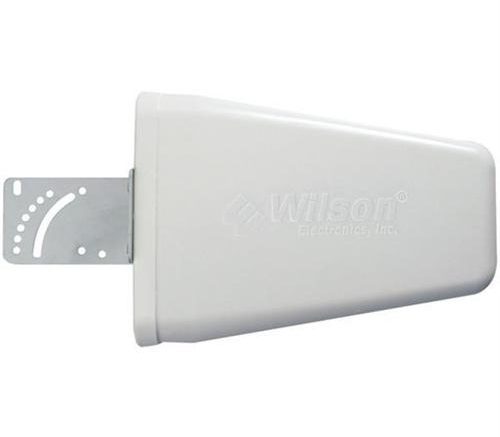At Solid Signal we have literally tons of cellular antennas. This would lead you to believe there’s a brisk trade in people changing out their cell antennas and that maybe you should too.
What’s so special about a cellular antenna?
Every antenna, whether for TV, cellular, Wi-Fi, or even satellite, has a specific frequency range. The antenna must be designed to pull in the frequencies you want. No one antenna will pull in every frequency, at least it won’t pull it in very well. In the case of cell antennas, you’ll need to pull in the 600-800MHz and 1900-2100MHz ranges in order to get the best effect.
There’s another measure of antenna performance you need to know about: gain. With cell antennas, gain is measured in dBi, which is a comparison with a hypothetical “isotropic” antenna. More dBi means the antenna is more sensitive to the signals you want to pull in.
Why not just use the antenna that comes with the thing?
Since 2014, all cell boosters for home use come with antennas. It’s actually the law. The cell booster maker hand selects the antenna they want you to use and it is included in the kit.
Most of the time their choice is the best choice. It does what’s needed without being too big. Most people want their antennas to be pretty unobtrusive and so booster makers will package small antennas in most kits.
Here are some reasons you might use a different cellular antenna:
You want better performance
In some cases, replacing an antenna with a larger one of the same type will help a cell booster work better. This is especially true in very weak signal areas. However, you can also put the antenna up higher which generally does the same thing
You’re willing to trade overall performance for better directional performance
An outdoor antenna like this one is highly directional. If you know where the cell tower is, and if you only need to point at one cell tower, you’ll get better results with a directional antenna. However you’ll have to aim properly and that can be hard without the right equipment.
You’re putting up a commercial booster and you want to cover a larger area
With large building cell boosters, it’s common to have four or more indoor antennas in order to cover a very large space. The commercial boosters are strong enough that you can split the signal between multiple antennas.
Something happened to your old antenna
This is actually pretty common. After all, the thing is outside all the time. Maybe a bird landed on it and bent it. Maybe a neighborhood kid got clumsy with a ball. If your old antenna looks like it’s in bad shape you’ll want to replace it with a new one.
How to choose the best cellular antenna
It comes down to two things: frequency and connection, really. You can choose a directional or omnidirectional antenna but the most important things with any antenna you choose is that it connects to your cell booster and that it works.
Frequency
Our collection of cellular antennas also includes antennas for special purpose use. Make sure you choose a cellular antenna that is designed for a cellular signal booster. It’s easiest to stay with antennas from weBoost, SureCall, or Wilson. They only make cell boosters and the antennas they make are only for cell boosters.
Connection/Impedance

Most cellular antennas for home boosters use F connectors. They also use 75-ohm cable which is only used with F connectors.

Commercial grade cell boosters usually use N connectors. The N connector is a lot larger than the F connector and you can see it has an inside center circle that F connectors don’t have. N connectors are designed for 50 Ohm cable.
The key is to choose the connector that you need and avoid costly and signal-sapping adapters. Generally the 50-ohm and 75-ohm versions of an antenna are very close to the same price.
Get all the cellular antennas you need at Solid Signal.
Seriously, like I said we have thousands of them. If you’re not sure what to choose, give the experts a call at 888-233-7563 during business hours.





